Skin Peels
A skin peel, also known as a chemical peel, is a cosmetic procedure that involves the application of pharmaceutical-grade exfoliating agents to the skin surface.

What is Skin Peel?
A skin peel, also known as a chemical peel, is a cosmetic procedure that involves the application of pharmaceutical-grade exfoliating agents to the skin surface. The goal of professional peels is to achieve skin exfoliation and skin texture improvement, revealing a smoother, more rejuvenated appearance.
Different types of chemical peels exist, the most common being AHA peels (Alpha Hydroxy Acids), also known as Glycolic acid peel. Stronger TCA peels (Trichloroacetic acid) are also available but are usually performed by a medical professional in our Dermatology department.

Skin Peel Quick Facts:
| Cost of Skin Peel | TBD |
|---|---|
| Duration of Treatment | 20-45 minutes |
| Days of Social Downtime | 0-3 days |
| How Long It Lasts | 12-24 months |
| Pain Management | None |
| Home Care Instructions | Follow your medical aesthetician’s home care instructions, wear sun protection, avoid heat and vigorous exercise for 72 hours. |
| No. Of Sessions Required | 3-6 |
| Final Results | Improvement in skin texture, lines and wrinkles, acne scars and pigmentation. |

Skin Peel Benefits
Facial peels offer a number of benefits that contribute to overall skin health and appearance. These include skin renewal and the reduction of hyperpigmentation, unveiling a fresh layer of skin underneath. Moreover, consistent use of skin peeling treatments can help to boost collagen production over time, contributing to improvements in skin texture, and the reduction of fine lines and wrinkles.
What Does Skin Peel Treat?
Acne and Acne Scars
Ingredients such as AHA peels (Alpha Hydroxy Acids) and BHA’s (Beta Hydroxy Acids) can help clear out sebum and clogged pores, kill acne-causing microbes and help smooth acne-scarred skin.
Enlarged Pores
Skin peels can improve the appearance of enlarged pores by removing dead skin cells and clogged pores.
Hyperpigmentation
A series of skin peels can minimize the appearance of dark spots, sun spots and other types of hyperpigmentation. Success will depend on committing to multiple treatments and using the recommended home care products.
Lines and Wrinkles
Smoother skin can be achieved with regular skin peels as they have been shown to stimulate collagen and improve elasticity, resulting in fewer lines and wrinkles.
Seborrheic Keratosis
Skin resurfacing can be used to smooth tiny bumps on the skin’s surface and address certain non-cancerous skin growths like seborrheic keratosis.
Sun Damage
UV exposure can lead to sun damage and photoaging, characterized by texture issues and pigmented lesions. A series of skin peels can produce dramatic skin texture improvement, in addition to a reduction in dark spots, lines and wrinkles.
Uneven Skin Tone
Dark patches can appear after too much sun, pregnancy, or they can be genetic. Glycolic skin peels can result in overall skin tone improvement, helping to even out the skin’s appearance.
ELEGIBILITY Who is a Good Candidate
The ideal candidate for a skin peel is someone with fine lines, sun damage, or pigmentation concerns. Suitable candidates have no history of keloid scarring or active infections, and have realistic expectations. Consulting with a medical aesthetician is recommended before performing a skin peel.
We invite you to book a consultation with one of our Dermatology experts to find out if a skin peel treatment is right for you.




